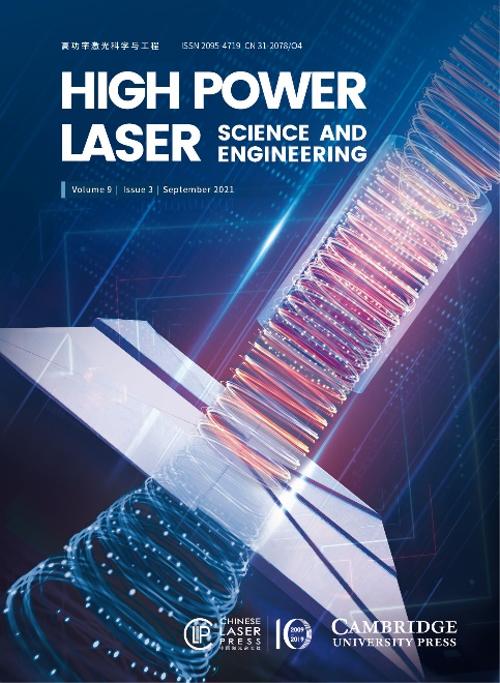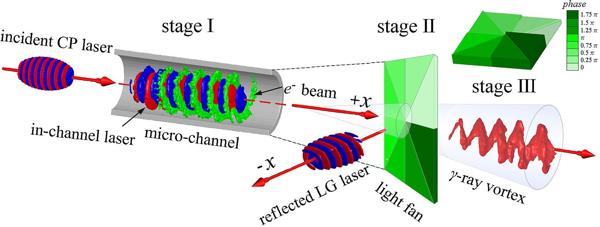Bright X/γ radiation sources have many applications in several fields, such as studying nuclear structure and physical phenomena, discovering new particles, ultra-high density flaw detection, generating high-flux positron and negative electron pairs, nuclear medical imaging, etc. Laser-plasma-based X/γ-photon sources have attracted extensive attention because of their compact size, relatively low cost, high beam brilliance and high photon energy.
In the past few years, significant progress has been made in the research of table-top hard X/γ-ray source. However, owing to the high photon energy, short pulse duration, and small source size, it is very challenging to manipulate these γ-rays in a compact manner, e.g., the wave front, intensity distribution, and angular momentum (AM).
Vortex photon beams have drawn wide attention recently spread over the microhertz to MeV-GeV γ-ray frequency ranges, due to their potential uses in microscopy imaging, microscopic particle control, and astrophysics. The interaction of matter and photons via the AM may play an important role in the evolution of matter in the universe. The photon beam can be converted into a vortex photon beam carrying angular momentum as it passes through a black hole or an inhomogeneous plasma.
With an additional degree of freedom, vortex photons can also carry more information concerning the physical circumstances of their sources, e.g., the magnetic field and radiation field. However, most schemes for generating high vortex photon beams require PW-class vortex lasers with an intensity of 1022W/cm2, which pose great challenges to current laser technology.
Recently, researchers from National University of Defense Technology, China present an all-optical plasma-based scheme to produce a well-directed multi-MeV γ-ray vortex beam with large beam angular momentum (BAM) and high brilliance. The related research results are published on High Power Laser Science and Engineering, Vol. 9, Issue 3, and is selected as cover paper (Hao Zhang, Jie Zhao, Yanting Hu, et al. Efficient bright γ-ray vortex emission from a laser-illuminated light-fan-in-channel target[J]. High Power Laser Science and Engineering, 2021, 9(3): 03000e43).

In the scheme, a circularly polarized (CP) Gaussian laser pulse irradiates a micro-channel target in the first stage, and many electrons are dragged out from the channel wall. These electrons are accelerated subsequently to hundreds of MeV by the longitudinal electric fields in the channel. Meanwhile, the drive laser transfers its spin angular momentum (SAM) to the energetic electrons' orbital angular momentum (OAM), so that a dense electron beam with large AM is formed. In the second stage, the drive pulse is reflected from the attached fan-foil, which adds exp(ilφ) to the phase of the drive laser and changes it to a Laguerre-Gaussian one.

Schematic of γ-ray vortex generation from a laser-illuminated light-fan-in-channel target.
Once the energetic electrons collide head-on with the reflected vortex laser, the nonlinear Compton scattering (NCS) is triggered with a large key quantum parameter χe. This results in a dense γ-photon with a small divergence of ∼ 9°, a peak brilliance of ∼ 1022 photons·s–1·mm–2·mrad–2 per 0.1% bandwidth at 1 MeV, a peak radiation instantaneous power of 25 TW, and averaged BAM of 106ℏ/photon. During the process, the laser AM is converted efficiently into γ-photons with an unprecedented efficiency of 0.67%, which is promising for some potential applications in various domains.


